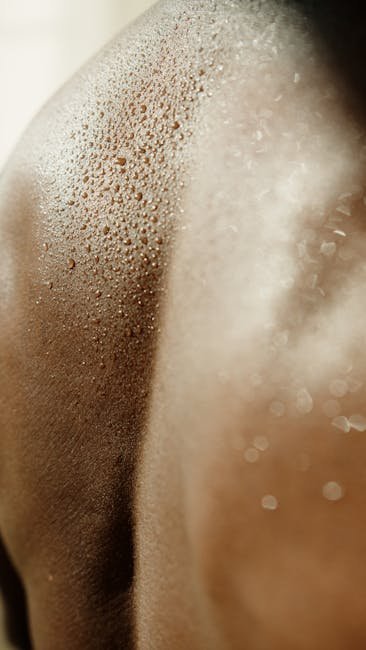Sweat is something that your body produces all the time, and while it may be sticky, it’s also super important: It helps hold your body temperature at a healthy level, and it allows you to exercise and spend time outdoors — especially in the summer sun, without worrying too much about overheating. But despite the importance of human sweating, there’s still a lot to learn about how humans perspire.
Take, for instance, the emergence of sweat. Scientists traditionally thought that sweat emerged from our pores as droplets. But a 2025 analysis in the Journal of the Royal Society Interface suggests that sweat actually arises in pools, filling our pores and pouring out onto the surface of our skin once our pores are filled.
“This comprehensive study provides new insights into the dynamics of sweating,” wrote the authors of the analysis in a 2025 preprint on arXiv. “Our findings challenge the traditional conceptualization of sweat emerging from pores.”
Read More: Your Fingers Wrinkle in the Same Pattern Every Time After Long Exposure to Water
Sweating for Science
While it may seem surprising that scientists are still learning about sweating, the “hows” of sweat emergence aren’t the easiest to study. While you might be able to see sweat on the surface of your skin (especially with the increasing intensity of summertime heatwaves), whether that sweat appeared as a droplet or as some other shape is tough to spot.
“Sweat emerging from pores is relatively difficult to see,” wrote the authors of the analysis in their preprint. “Skin surface sweating dynamics are surprisingly understudied on the micro-to-macroscale.”
So, to tease out the dynamics of perspiration, the authors of the analysis took a two-pronged approach. To start, they asked six participants to wear a special suit filled with water. Then, they warmed and cooled the suit, monitoring the participants — and the sweat on the skin of their foreheads — as they adjusted to the changing temperature.
While their microscale measurements came from microscopic imaging, which captured a magnified view of the sweat emerging in individual pores, their macroscale measurements came from a sweat-measuring capsule, which assessed the accumulation of sweat across a somewhat larger surface of skin. The results showed that the sweat pooled in the participants’ pores, without forming droplets.
Read More: Why Scratching an Itch Feels So Good
Sweat Droplets, Pools, and Puddles
Scientists long thought that our droplets of sweat coalesced on the surface of our skin, and the authors of the analysis found something similar, albeit in pools. Once the participants’ pores were filled with pools of perspiration, the sweat overflowed into puddles, which, in turn, transformed into a thin film over the skin.
The participants’ skin was first made to sweat, then to dry. Then it was made to sweat again, and surprisingly, this second sweat was faster than the first. The participants’ pores filled in an average of 5 minutes (in comparison to the average of 15 minutes from the first sweat test) and then formed a thin film, without creating puddles first. This was “most likely due to the presence of salts on the skin,” wrote the authors of the analysis in their preprint, which was left there after the first film of sweat had evaporated.
Of course, it is this evaporation that helps prevent you from overheating in the summer, as it pulls heat from the surface of your skin.
Ultimately, studying how sweat emerges is important for human health, textiles, and technology, as it may help scientists develop better fabrics and wearable devices and design better tools for diagnosing certain conditions that are associated with sweating, such as hypohidrosis. So don’t sweat it — or maybe do. Though the work is sticky, the science of sweat may one day help us in a myriad of ways.
This article is not offering medical advice and should be used for informational purposes only.
Read More: Why Are People Ticklish?
Article Sources
Our writers at Discovermagazine.com use peer-reviewed studies and high-quality sources for our articles, and our editors review for scientific accuracy and editorial standards. Review the sources used below for this article:
-
Journal of the Royal Society Interface. A Micro-to-Macroscale and Multi-Method Investigation of Human Sweating Dynamics
-
ArXiv. A Micro-to-Macroscale and Multi-Method Investigation of Human Sweating Dynamics
-
Nature Communications. Increasing Trends in Regional Heatwaves
Sam Walters is a journalist covering archaeology, paleontology, ecology, and evolution for Discover, along with an assortment of other topics. Before joining the Discover team as an assistant editor in 2022, Sam studied journalism at Northwestern University in Evanston, Illinois.


